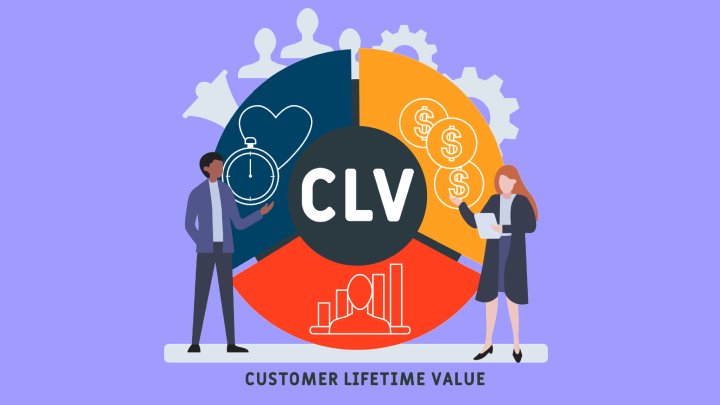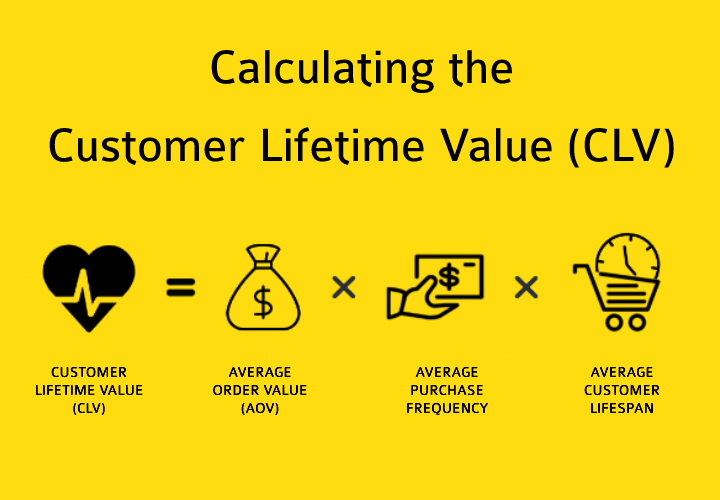SEO Tips for E-commerce: Improve Your Online Shop's Ranking in Google
SEO is an important tool for e-commerce businesses to bring in new customers. Here are the best tips for your online shop to rank higher in Google.

Customer lifetime value (CLV) can be an incredibly useful metric for online shop owners. As, you can imagine, calculating the CLV of your customers can give you insights into how long your customers stay with you and how much they spend with your business over this “lifetime”.
Knowing this information regarding your customer lifetime values will help you create a better marketing strategy and improve other aspects of your business. This will, in turn, allow your business to continue growing while simultaneously make your customers feel recognised. Today, we will talk about the customer lifetime value, how to calculate it, and we will give you eight tips to extend the time and quality of life of your customers.
Table of Contents:
The customer lifetime value (CLV) is the total value of income that a customer brings to your business over the entire duration of the business relationship.
If you calculate this value for your different customer groups, it can help you determine which customers are the most profitable for your business. It is also useful during the creation of marketing campaigns since you’ll know who and what to invest more in.
Recommended reading:
Creating a Buyer Persona to Better Understand Your Customers
Who do you think will generate more income for your brand? A new client who is just discovering what you sell or a client who has followed you for years and buys regularly? Exactly…
Therefore, you have to spend more time with those returning customers and create offers to keep them engaged and loyal to your brand. Knowing the lifetime value of your regular customers will allow you to retain more users and create a bond of trust between your business and the customer.
It’s worth noting that this metric can be extremely useful for companies that work on a subscription model, but normal retailers can make use of this metric as well.
As William Thomson Kelvin said “If you cannot measure it, you cannot improve it.” In order to improve this key performance indicator (KPI), you’ll need to know how to calculate it. With this knowledge, you’ll get a better idea of where to focus your optimisation efforts.

In order to calculate your customer lifetime value, you’ll have to multiply the average order value (AOV) by the average purchase frequency, and then multiply this by the average customer lifespan.
Breaking things down a bit further…
Average order value: You can calculate this by simply taking the total revenue you’ve earned and dividing this by the total number of orders you’ve had.
Average purchase frequency: Calculate this element by dividing the total number of purchases, by the total number of customers you’ve had.
Average customer lifespan: Calculate this by taking the sum of customer lifespans and dividing it by the total number of customers. This can be a tricky number to calculate, especially for newer companies. You can estimate your customer lifespan by taking the number 1 and dividing it be your churn rate percentage.
Let’s look at an example of a CLV calculation. Imagine you are a fashion brand.
The first step is to get the average order value. We can do this by looking at our total revenue and diving it by the number orders placed.
Next, we need the average purchase frequency. We’ll divide the total number of purchases by the total number of customers you’ve had.
Finally, we need the average customer lifespan. Again, this can be tricky. If you have enough data, you can see how long the average customer continues to purchase from you by figuring out the number of days between their first purchase and their last purchase.
Alternatively, you can take the number 1 and divide it by your monthly churn rate (e.g. 3.33% or 0.0333).
Now that we have all three numbers, we can calculate the customer lifetime value…
Customer lifetime value = £35 x 1.67 x 2.5 = £146.13
It’s important to take this metric in the right context. You should consider factors like Customer Acquisition costs (i.e. how much it costs to acquire new customers) when looking at the big picture as well. For example, if your customer acquisition costs are £160, but your CLV is only £146, then you’re doing something wrong.
It's also important to remember that the numbers used to calculate your numbers can be altered to reflect more recent performance. For example, your average basket values might have gone up in recent years due to a number of factors (e.g. raising prices, different product offers, etc.). Therefore, you might want to look at some more recent averages rather than total averages in order to get a more accurate and up-to-date number.
Finally, you should also take these numbers and look at what elements of those equations you can influence in order to figure out where you can optimise. With the tips below, you’ll find some ways to boost the numbers for some of the KPIs we’ve listed above (e.g. average order value).
Now that you know how to calculate your lifetime value, let’s look at a few ways your business can improve that number.

Shutterstock/kozhedub_nc
The first step in increasing your most important KPIs is to turn visitors into new customers. That’s why your first impression is so important.
Personalise your interactions with each customer whenever possible. Have new users welcomed with a special offer for first time buyers. This can be done with something like a banner or pop-up that appears later in the journey.
If you acquire a new customer or someone signs up for updates (or creates an account on your site), have a strategy in mind with that first welcome email. It might be a good idea to mention some of the most viewed articles on first visits in that email.
Either way, a good first experience can increase the chances that they’ll return for a second purchase.
Sticking with the topic of first experiences, you can focus on the customer journey.
Try to make the purchase process as concrete and efficient as possible. The fewer clicks and other barriers that a customer has during their checkout process, the more pleasurable the experience.
Along with a simple experience, it’s also very important to convey safety during the customer journey. For example, online shops that carry the Trusted Shops Trustmark automatically offer their customers a free Buyer Protection that insures every order up to a value of £2,500 (or €2,500). To date, more than 45 million purchases have been backed up with the Buyer Protection.

Source: Swanky Pins
If you’ve segmented your data, you should have an even better understanding of who your buyer persona is. With a better understanding of your target audience(s), you can tailor your content to those customers as well.
New content shouldn’t necessarily be limited to blog articles or other written texts. Although they can bring lots of SEO benefits, other forms of content can be beneficial as well. You could, for example, create video tutorials or collaborate with influencers in your niche.
Good content can also build trust for your online shop. Trust is the foundation of loyalty.
Recommended reading:
Increasing Customer Loyalty: Stats & Tips
Your paid marketing efforts can also benefit from this knew understanding of your target audience. Tailor your texts, images and videos to your key demographic(s).
Speaking of loyalty, a loyalty program is a marketing strategy that helps you retain customers and bring back new ones by offering them benefits for continuing to shop with your business.
It’s worth mentioning that a loyal customer is also likely to leave positive customer reviews for your business, thereby improving your online reputation.
Recommended reading:
What Kind of Loyalty and Rewards Systems Work for Small Businesses?
After the user makes a purchase, do not forget to follow up. Make sure they know that the package has been sent out for delivery. Be sure to ask the customer for feedback as well. Not only can this boost your online reputation, but it is a genuine opportunity to learn from your mistakes and improve your products and/or services.
Customer service should also be available to the buyer either through chatbots or personalised phone calls. In this way, the customer will feel safe and accompanied throughout the purchase process and will return to your business for their next purchase.

Shutterstock/Tyler Olson
Knowing how to respond to reviews both positive and negative is an important element to communicating your after sales service.
In order to segment the tastes of your customers in a more specific way, make use of the tools for predictive analysis.
The algorithms of these tools automatically create a history with the preferences of each of your customers that you can use to recommend other products in their future purchases through newsletters and paid marketing efforts.
As an online company, you always have to be up to date with regards to what your customers are saying about you. Are they happy or could you improve something? What do they think about your products in general?
Your sales and customer service teams have to keep social listening constantly active, searching social networks for comments that talk about your business or analysing the reviews of your page. Satisfying their needs will strengthen the bond you have with your customers .
With the help of social networks, try to get involved in the community (or create one yourself!). By showing yourself in forums and more visual networks (like Instagram or TikTok), you can show more of your brand image. Again, think of the tip regarding content creation.
This can, however, also include local events, sharing knowledge on reddit, or creating a YouTube channel with tutorials. By engaging in the customer community, you can inspire trust, boost traffic, and increase customer loyalty.
Like many other key performance indicators, knowing your customer lifetime value can help you improve your company’s performance. It can help you win over new customers, as well as retain existing ones. Take a look at your data and make sure you use the information to your advantage.
This article was adapted from our Spanish-language blog article: 8 consejos para mejorar tu Customer Lifetime Value
08/03/23SEO is an important tool for e-commerce businesses to bring in new customers. Here are the best tips for your online shop to rank higher in Google.
Valentine's Day has grown in popularity across Europe. We're sharing some romantic statistics (redundant, right?) and look at 9 marketing tips for V-day.